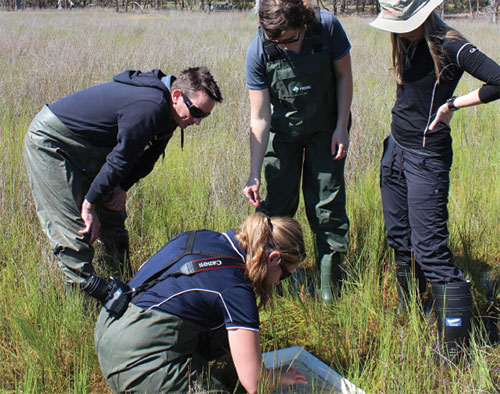The effect of water for the environment in Victoria is assessed through large-scale monitoring programs measuring many indicators at multiple sites over many years, as well as investigations examining responses at a single wetland or river reach.
These monitoring programs include:
- The Victorian Environmental Flows Monitoring Assessment Program investigating the effect of flows on native fish and aquatic and streamside vegetation
- The Wetland Monitoring Assessment Program examining the effect of water for the environment on native vegetation, waterbirds, fish and frogs in wetlands.
- The MDBA’s monitoring activities at Barmah Forest, Gunbower Forest, Hattah Lakes and the Lindsay, Mulcra and Walpolla islands as part of the Living Murray Program
- The CEWH’s Flow-MER program monitoring the responses of fish, vegetation, bugs, stream metabolism and bank erosion to environmental flows in the lower Goulburn River.
The VEWH reports on watering and results each year in Reflections.
